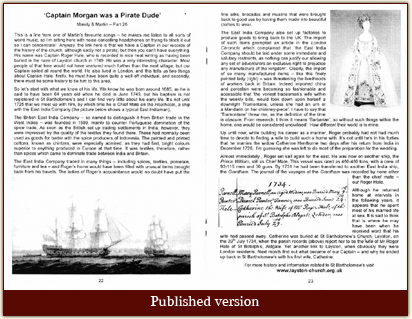Mandy & Martin

This is a line from one of Martin's favourite songs – he makes me listen to all sorts of weird music so I'm sitting here with noise cancelling headphones on trying to block it out so I can concentrate! Anyway, the link here is that we do have a Captain in our records although, sadly, not a Pirate, but then you can't have everything in life! However he was still a very interesting character in the history of the church. Many people of that time would not have ventured much further than the next village, but our Captain sailed all round the world, lived in London, but is recorded in nice neat writing as having been buried in the Nave of Layston church in 1749.
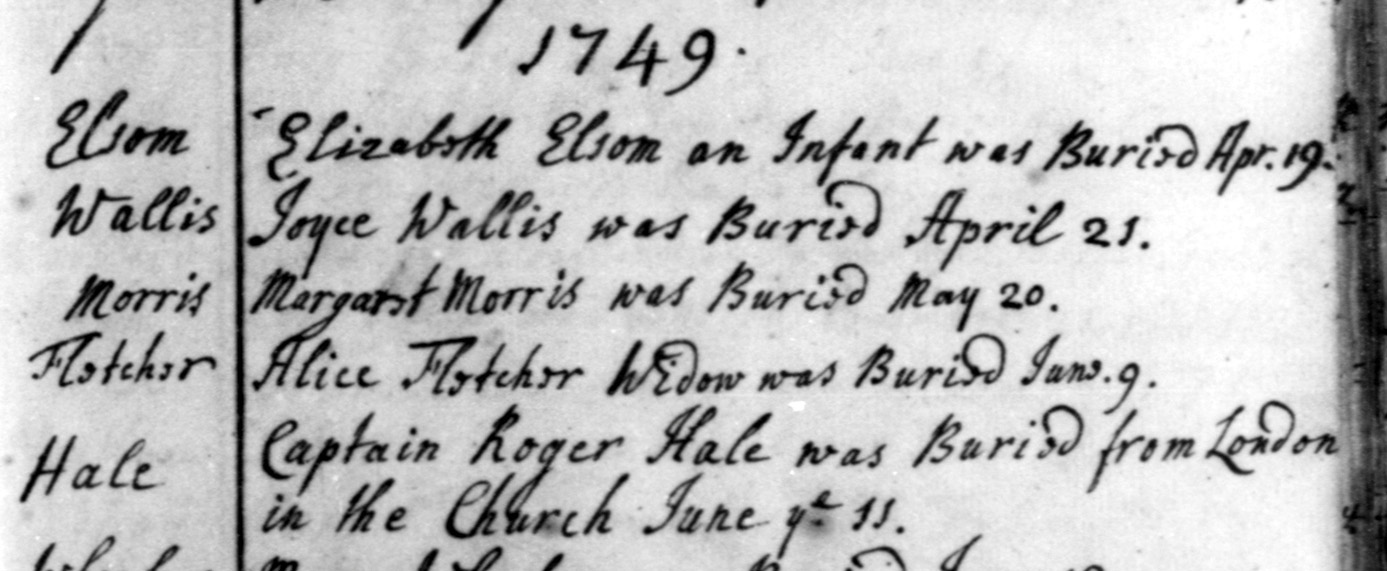
This tells us two things about Captain Hale, firstly he must have been quite a well off individual, and secondly that there must be some history to tie him to this area.
So let's start with what we know of his life – we know he was born around 1685, as he is said to have been 64 when he died in June 1749, but his baptism is not registered in St Bartholomew's, and I can find very little about his early life. It's not until 1725 that we catch up with him by which time he has become the Chief Mate on the Heathcote with the East India Company.
The British East India Company - named to distinguish it from British trade in the West Indies - 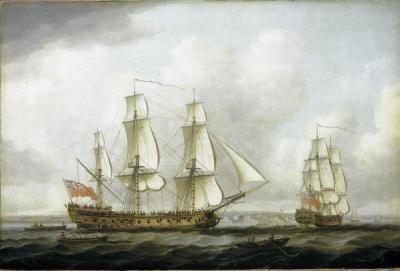 was founded in 1599, mainly to counter Portuguese domination of the spice trade. As soon as the British set up trading settlements in India, however, they were impressed by the quality of the textiles they found there. These had normally been used as goods for barter with the spice producers of Indonesia. The painted and printed cottons, known as chintzes, were especially admired, as they had fast, bright colours superior to anything produced in Europe at that time. It was textiles, therefore, rather than spices which soon came to dominate trade between India and Britain. Roger's home would undoubtedly have been filled with unusual items brought back from his travels.
was founded in 1599, mainly to counter Portuguese domination of the spice trade. As soon as the British set up trading settlements in India, however, they were impressed by the quality of the textiles they found there. These had normally been used as goods for barter with the spice producers of Indonesia. The painted and printed cottons, known as chintzes, were especially admired, as they had fast, bright colours superior to anything produced in Europe at that time. It was textiles, therefore, rather than spices which soon came to dominate trade between India and Britain. Roger's home would undoubtedly have been filled with unusual items brought back from his travels.
The East India company traded in many things – including spices, textiles, porcelain, furniture and tea, which would have meant that the ladies of Roger's acquaintance would have been dressed in the most beautiful clothes as the silks, brocades and muslins that were being brought back were put to good use.
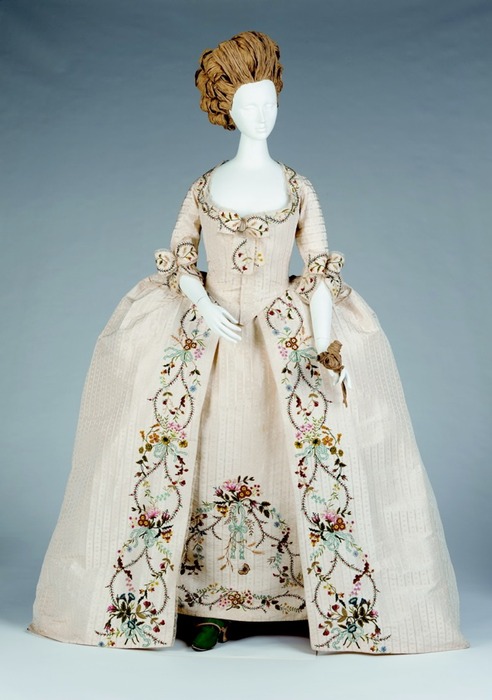
The East India Company also set up factories in the Indies and China to produce goods to bring back to the UK. The import of china and porcelain prompted an article in the London Chronicle to state that "the East India Company should be laid under some immediate and salutary restraints, as nothing can justify our allowing any set of adventurers an exclusive right to prejudice any manufacture of the kingdom". Clearly the import of these manufactured items was threatening our own workmen's livelihoods. Indeed these things were becoming so fashionable and accessible that "the veriest tradesman's wife within the weekly bills, would look down upon herself a downright Tramontane, unless she had an urn or a Mandarin on her chimney-piece." I have to say that 'Tramontane' threw me, as the definition of the time is obscure – I think from research it means 'Barbarian'… So therefore without such things within one's home, one would be considered uncivilised! How different their world is to mine!
Up until now Roger has probably not had much time to devote to finding a wife to build such a home while he's been building his career as a mariner, so it's not until he's in his forties that he marries the widow Catherine Henthorne two days after his return from India in December 1726. I'm guessing she was left to do most of the preparation for that wedding!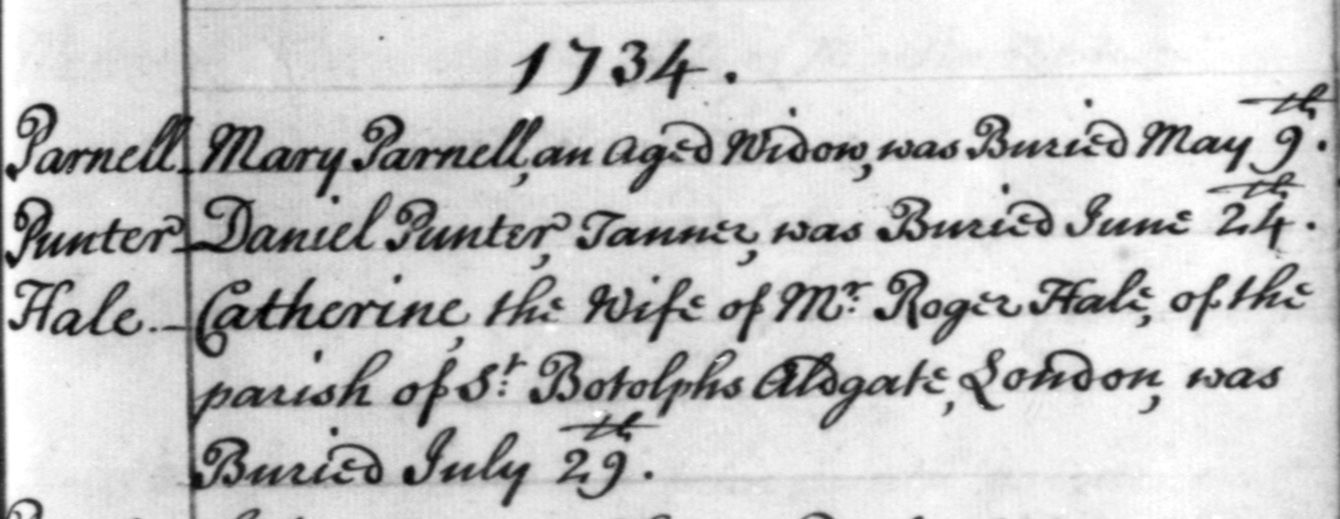
Almost immediately afterwards Roger sets sail for the east again. He has now been transferred to another ship, the "Prince William" butis still only the Chief Mate. This is rated as 460-480 tons, has a crew of between 92-115 men and 30 guns. By 1731 he'd again been transferred to another East India ship, this time the "Grantham". The journal of the voyages of the Grantham was recorded by the chief mate – Roger Hale.
Although he returned home at various intervals during the following years, it appears that he spent most of his married life at sea. It is sad to think that he may have been at sea when he received word that his wife had passed away.
Catherine was buried at St Bartholomew's Church Layston on the 29th July 1734 where the parish records (in very neat handwriting) report her to be the wife of Mr Roger of St Botolph's Aldgate. Yet another link to Layston when obviously they were London residents. Next month find out what became of our Captain - and why he ended up back in St Bartholomew's with his first wife, Catherine.
 |
|
 |

